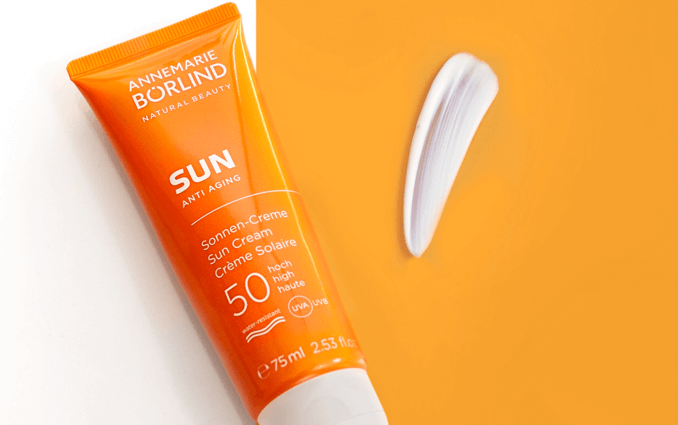Ultraviolet, according to the head of the laboratory of the Federal Medical and Biological Agency Oleg Grigoriev, is much more dangerous than the notorious mobile phones. You can get a killer dose of ultraviolet even on a cool day, especially in the mountains, which is why it is so important to use sunscreen all year round.
But which of the variety to choose? Let’s figure it out.
What is sunscreen for?
Warren Vallo, director of science at Johnson & Johnson Skincare Research, warns that the skin is constantly nourished by ultraviolet radiation, not only in summer, but also in winter. Even if you sit in the office from morning to evening and do not show your nose to the street during the day, ultraviolet light still penetrates through the glass (if your desktop is near the window, do not forget about the cream).
Not to mention the time when you are outdoors, relaxing in the park, skiing, swimming – at this time the rays affect the top layer of the skin – the epidermis. Therefore, SPF creams should be used all year round, and not just during vacations at the resort.
Why is ultraviolet so dangerous?
- In increased doses, it causes the development of skin cancer, especially melanoma.
- Causes signs of photoaging, the first “bell” of which are age spots.
- It becomes the cause of hyperkeratosis, that is, thickening and excessive peeling of the stratum corneum of the epidermis.
- Causes premature appearance of wrinkles.
- It provokes the development of photosensitivity and rashes, which are in many ways similar to allergies, which is why people are often mistakenly prescribed the wrong treatment.
How to choose a cream
Last year, specialists from the Department of Dermatology at Northwestern University Medical Center in Chicago conducted an examination of sunscreens. And they were shocked. Almost half of the funds (41%) did not meet the stated requirements!
In total, 65 sunscreens were subject to examination. Many of them did not contain the protective index declared on the packaging, some did not have the promised water resistance, and there were those that contained expired components.
How in such a situation not to make a mistake when buying and not become a victim of unscrupulous manufacturers? Here’s what dermatologists recommend:
1. The generally accepted designation of protection on such products is indicated by the abbreviation SPF (Sun Protection Factor). However, this icon means that the cream only protects against UVB rays, that is, medium waves of ultraviolet radiation. And then there are long UVA rays. They are protected by filters, designated – depending on the country – as PA (Protection Grade of UVA) or PPD (Persistent Pigment Darkening). Thus, for the greatest protection, it is worth buying a cream that has a double SPF and PA (PPD) on the package.
2. The number next to the abbreviation shows how “strong” the remedy is. The higher the number, the better. In the case of SPF, the maximum value is 50 (this gives the strongest protection and is recommended for use at the beach or in areas of high radiation, for example, in Australia). For a hedgehog use in the city, SPF 30 will do. Anything below 20 is no longer protection, but just a conversation in favor of the poor.
With PA, the protection level is indicated not by numbers, but by pluses: the maximum value is PA++++, the minimum is PA+.
3. There are also UVC rays, but they are too short and do not reach the Earth, so you do not need to worry about them. If a sunscreen says “protects against UVC”, then this is a simple swindle and “wiring” of buyers.
4. If possible, choose a product that will be resistant to water and sweat (the package should be marked “waterproof”).
5. If you use several protective products at once (for example, cream and powder), then please note that the filters in this case are not added. Only one will work, the one that is higher in value. For example, if you apply a cream with a protective index of SPF 30, and put SPF15 powder on top, then protection will not be 45, but only 30.
6. Trust the advice of your friends less – more expertise and dermatologists. It has been proved more than once: the testimony of experts and ordinary people differ significantly. For ordinary people, the beauty of packaging and smell, as it turns out, are more important than the performance of the product. And it should be exactly the opposite.
How to apply a cream
SPF creams need to be reapplied every two hours.
Consider the consistency of the product. Creams are best suited for dry skin on the body and face. Gels are good for hairline, for example, male breasts, as well as for owners of oily skin. Lotions are good to use around the eyes. Sprays are suitable to provide the child with protection from head to toe.
Apply sunscreen after moisturizer or nourishing cream, but before foundation. Moreover, after using SPF, it is worth waiting a few minutes to thoroughly absorb before applying makeup.
Do not forget about such parts of the body as the neck, hands, décolleté, lips, ears – they are most susceptible to ultraviolet radiation.
Every time you leave the sea, reapply the cream, even if you smeared it with it a few minutes before you go swimming.
Use mineral powder, its inorganic substances are a kind of UV filters. Titanium and zinc dioxide, which are always present in mineral water, have an excellent photo-repellent effect. Often such cosmetics have SPF 50 protection.
Sunscreen should be applied at least 20 minutes before going outside.










